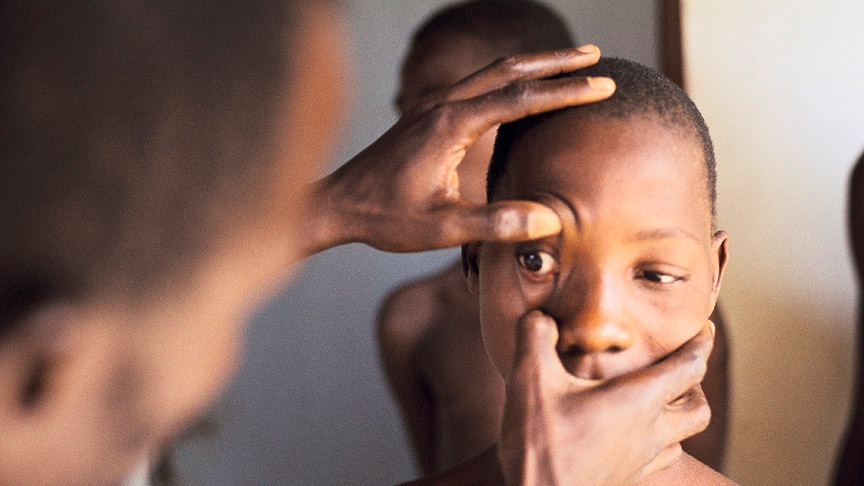Diseases of Neglected People:
The Neglected Tropical Diseases (NTDs) lock people into poverty and undermine the resilience of communities. Africa experiences over 50% of the world’s NTD burden, with three countries (Democratic Republic of Congo, Ethiopia, and Nigeria) bearing 39% of the regional burden. These diseases can severely affect the health, education, and earning potential of the poorest people. People’s poor health and out-of-pocket expenditures for health care are among the leading causes of poverty; improving health is one of the keys to ending extreme poverty by 2030 and boosting shared prosperity. The preventable NTDs can be controlled by simple, safe treatment delivered once or twice a year by community health systems, while other NTDs require clinical case management. Effective NTD treatment programs target the roots of poverty, reducing the vulnerability of those at the periphery of health systems.
The World Bank as a Partner in NTD Control:
The World Bank’s Africa Region has helped fight these diseases of poverty for more than forty years, contributing to remarkably successful river blindness control in many countries. The 1974 agreement by then Bank President McNamara to establish a Partnership to Control River Blindness was among the first World Bank health project. The World Bank has been part of the long-running public-private partnerships that have supported this effort through the Onchocerciasis Control Program (OCP) and the African Programme for Onchocerciasis Control (APOC). The World Bank’s Africa Region will be commemorating these successful partnership efforts, and exploring ways to expand this success to include more NTDs at a 40th Anniversary Summit for OCP/APOC on June 20th in Washington, DC.
Success in Reversing the Impact of River Blindness in Africa:
Improving Health: River blindness programs in Africa currently treat more than 100M people a year in all 31 countries where the disease is endemic. Except in countries affected by conflict, blindness from this cause has been largely eliminated from the continent.
Interrupting Transmission: In Senegal and Mali, the transmission of river blindness has been successfully interrupted, with treatment suspended for more than 4 years. Following this model, transmission has been interrupted in 6 countries in Africa, and the continent is on track to eliminate the disease from nearly all endemic countries by 2025.
Promoting Agriculture and Human Development: In countries benefiting from river blindness programs, communities formerly affected by river blindness have developed greater market-oriented land use, as well as benefited from improved access to electricity and telephone service, markets, and education. These investments have made 25 million hectares of arable land safe to cultivate, feeding 17 million people.
An Exceptional Value for Money Opportunity to Eliminate NTDs:
The success of these programs has led to a call for broader efforts that will address all five preventable NTDs[1], as well as address the case management NTDs through health systems. In 2012, the pharmaceutical industry collectively agreed to donate most the medicines necessary for a global NTD effort in low-income countries. In 2013, all 47 Health Ministers from Africa committed to support a regional effort to control, and where possible, eliminate all preventable NTDs from the continent. This presents an exceptional opportunity for development partners to build on the success of the river blindness programs and expand the effort to address all preventable NTDs using a common community delivery system to distribute medicines. According to the 2013 Lancet Commission on Investing in Health, the “elimination of (high burden NTDs) for such low costs… represent[s] very good value for money.”
World Bank Commits New Money to NTD Elimination:
Beginning in Africa, the World Bank is facilitating new funding streams to help countries that are “too poor to give away free drugs.” Initial efforts have focused on increasing allocation of existing International Development Association (IDA) country resources to national NTD programs. To date, some US$120 million has been committed to NTDs in Africa from a combination of national and regional programs, including the Senegal River Basin Project and a new regional initiative to support the NTD agenda in the West African Sahel. The World Bank’s Africa Region also is working with partners to leverage donor support to countries, building on the model of the APOC multi-donor trust fund. The success of the model was largely due to leadership by a WHO-led regional technical entity as well as harmonized support from 30+ contributors to the trust fund managed by the World Bank. A similar approach addressing the broader NTD agenda is being explored with other partners.
Four Reasons Why the World Bank Is Targeting Support to the NTD Agenda:
1. The drugs to treat NTDs have been donated (largely through commitments made in the London Declaration on NTDs) and treating these diseases offers exceptionally good value for money, particularly now that disease elimination is in sight.
2. Treating NTDs strengthens health systems by training and utilizing (a) low-cost community-based delivery systems to provide mass drug administration for the five preventable NTDs, which can be eliminated by mass drug administration, and (b) integrated clinical case management (ICCM) to address NTDs that require the clinical management of individual cases.
3. NTD activities are a great opportunity to promote cross-sectoral engagement with education and agriculture.
4. NTDs affect the poorest communities, those at the ‘end of the road,’ in extreme poverty. At the 2012 ‘Uniting to Combat NTDs’ event, World Bank Group President Jim Yong Kim said, “These are not neglected diseases, but diseases of neglected people.”
------------------------------------------------------------------------------------------------------------------------------------------------------------------------
[1] Lymphatic filariasis, onchocerciasis, schistosomiasis, trachoma and soil-transmitted helminths (STH), which includes ascariasis (roundworm), trichuriasis (whipworm) and ancylostomiasis (hookworm).
